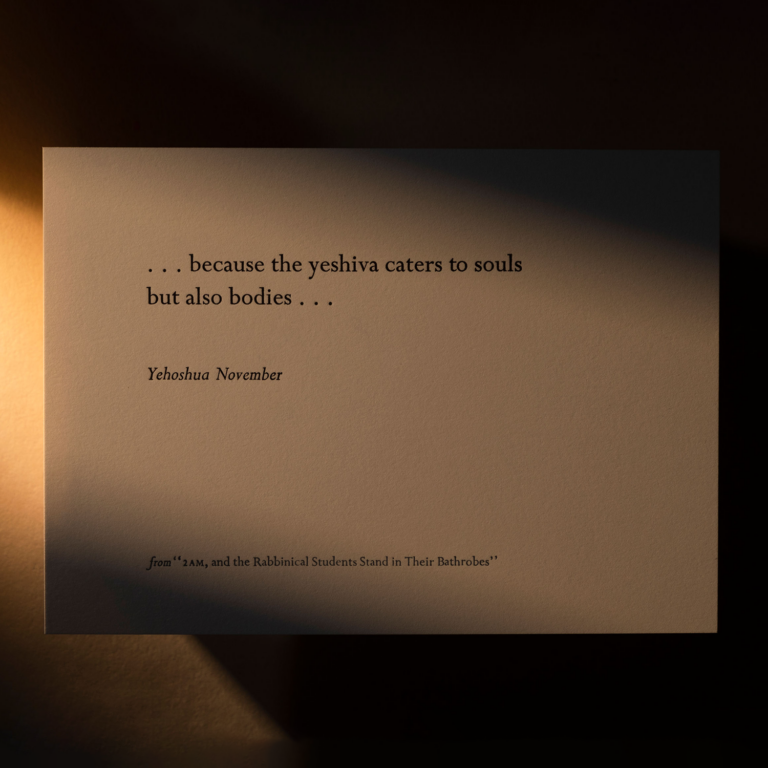Healing Our Sight: Training Ourselves to See the Best in People during The Three Weeks
According to Sefer Yetzirah, to each month of the Jewish calendar there corresponds a letter of the Hebrew alphabet, a zodiac sign, one of the twelve tribes of Israel, a sense, and a controlling limb of the body…
That’s from The Month of Tamuz According to the Book of Formation (Sefer Yetzirah) at Inner.org, a website which collects the kabbalistic teachings of Rabbi Yitzchak Ginsburgh. R’ Ginsburgh teaches that the sense associated with this month is sight. And the tribe associated with this month is Reuben — a name which comes from the same root as the verb “to see.”
Our task this month, he teaches, is to rectify, or heal, our own sight. “[O]ne must train one’s eyes (both spiritual and physical) to see only the inner positive dimension of reality and not to focus upon reality’s outer, negative ‘shell.'” On another page at that same site — The Month of Tamuz: The End of Tragedy — we read:
The sense of the month of Tamuz is sight. This means that the month of Tamuz is the best month of the year to learn to exercise our sight in the most positive way possible. Rectified sight involves both shying away from that which is negative (an ability associated in Kabbalah with our left eye) and training ourselves to see things in a positive light (associated with our right eye). In essence, both aspects are included in the right eye, which means that we should seek to see only the good points in others.
I love this idea: that this month it is our task to learn to stop seeing the bad in people, and to perfect the art of seeing the good in people. I make a year-long practice of trying to see the good in people, but there’s something especially meaningful to me about the idea of strengthening that practice during this time.
We’ve entered the Three Weeks when we are bein ha-meitzarim, caught in the narrow straits of remembered grief and suffering. We remember the sack of Jerusalem and the fall of the Beit haMikdash, the house of holiness where we once understood God’s presence to dwell. I keep returning to the text from Talmud which teaches that it was sinat chinam, needless hatred between and among our community, which brought the Temple down. And I find that I’m feeling even more keenly than usual the wish that I could create bridges of understanding between people who don’t see eye to eye.
If we could all spend these Three Weeks healing our sight so that we truly only see the good in one another, how might the world be different? I’m not talking about superficial pretense, but about really training ourselves to see the best in people. Imagine seeing the best not only in your friends, but in the guy who cuts you off in traffic; in someone who looks different from you; in someone whose political positions are the opposite of yours.
Imagine Democrats and Republicans not just pretending to like one another, or focusing on their common ground in order to get along, but really figuring out how to see the good in each other. Imagine AIPAC supporters and Jewish Voice for Peace supporters doing the same. Secular Israelis and ultra-Orthodox Israelis. Soldiers and refuseniks. Israelis and Palestinians.
The classical tradition, I suspect, would argue that our task is to learn to see the best in each other within our community, not outside the bounds of our community. (Define those boundaries how you will.) But my teacher Reb Zalman Schachter-Shalomi has taught that in this age of paradigm shift, we need to move beyond triumphalism to an organismic understanding of our place in the world. Each religion is a necessary organ in the body of humanity; we need to maintain our differences, but we also need to communicate and connect. Maybe the best way to do that is to learn to see the best in one another.
May our vision be healed; may we learn how to look at each other and to see not our flaws and failings and differences but our holy sparks, our souls which shine, no matter who we are.

Share your reflection